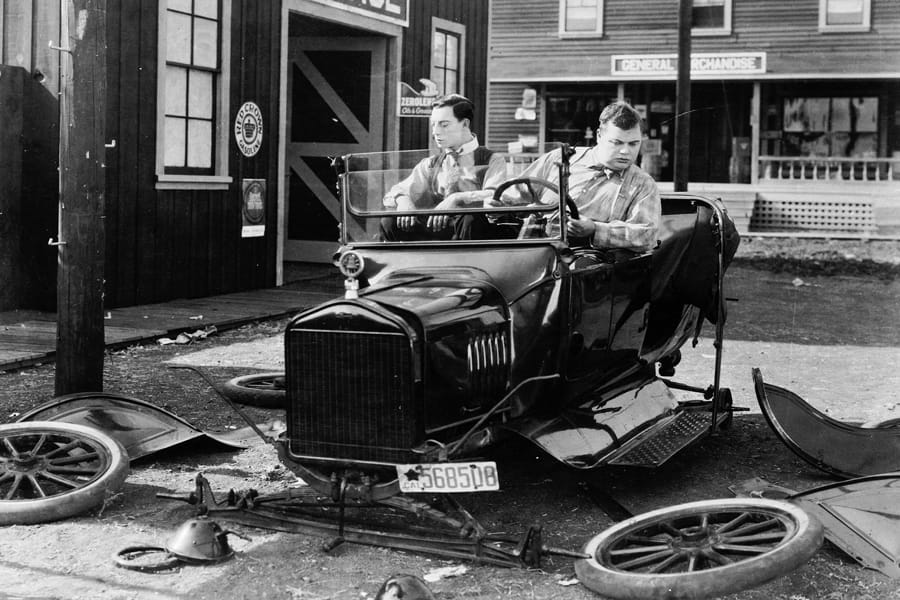
The San Francisco Silent Film Festival hosts their winter program, ‘A Day of Silents’ at the Castro Theatre tomorrow, with a bit of something for everyone. Artistic Director Anita Monga says it begins with a pairing of Buster Keaton with Fatty Arbuckle, and ends with Lon Chaney in his famous Phantom of the Opera. Included in the day is a collection of shorts by pioneering French filmmaker Alice Guy Blaché.
There’s more information about the screenings at the SFSFF website.
The films begin at 11 in the morning, with shorts celebrating the pairing of the pre-famous Buster Keaton with the top comedy filmmaker of the day, Roscoe “Fatty” Arbuckle. “Seeing Fatty and Buster together, they obviously love each other, and are just having a great, goofy time,” Monga says. “As his nickname ‘Fatty’ could tell you, he was of great girth, and extremely agile. So, you know, the disconnect between somebody who’s very big, and very elegant and delicate. And he was… hilarious.” Those are followed by a film called Redskin from 1929, which deals with a young Navaho man pulled from his tribal lands and forced to assimilate. “The title was very deliberate. It wasn’t a racist title, it was pointing out the racism that the protagonist lived with. The really remarkable thing about this film is that it is filmed in two-color Technicolor, and so it really favored the reds and browns and greens. And it’s exquisitely beautiful and other-worldly. When the camera leaves the tribal lands, the film goes to monochrome, so it’s like sepia, or amber tinting.” Rather than being an intentional artistic statement, Monga says the director had to switch to the cheaper monochromatic process when they ran out of money for the more expensive color processing. The works of Alice Guy Blaché are next up, at 3:15. “She is not as known as Méliès or the Lumières, but she was right there, and she is probably the first filmmaker to do narrative. She saw the ability to use this new medium to tell little stories. The Lumière brothers showed actualities. You know, you would film people coming out of a train station. And pretty early, Méliès for instance, understood the narrative part of film making. But Alice seemed to have been there even before he.” Then there’s The Marriage Circle at 5:00, a comedy of manners by Ernst Lubitsch, before the final classic feature, The Phantom of the Opera, with accompaniment by the Berklee Silent Film Orchestra (and soprano), from the school in Boston.







